Andersen's Fairy Tales and Legends illustrated by Dugald Stewart Walker
Fairy Tales and Legends by Hans Christian Andersen with Dugald Stewart Walker's illustrations
Dugald Stewart Walker (1883-1937) was an insurance salesman at first but soon realized this job doesn't suit him. He found his mission in the world of art, studying drawing at the University of Virginia and New York School of Art. His style differed him from his contemporaries in the USA. Critics rather compared his work with Arthur Rackham and Edmund Dulac. Original and eccentric execution of illustration probably achieved the peak in the collection of fairy tales by Hans Christian Andersen which succeeded great success.
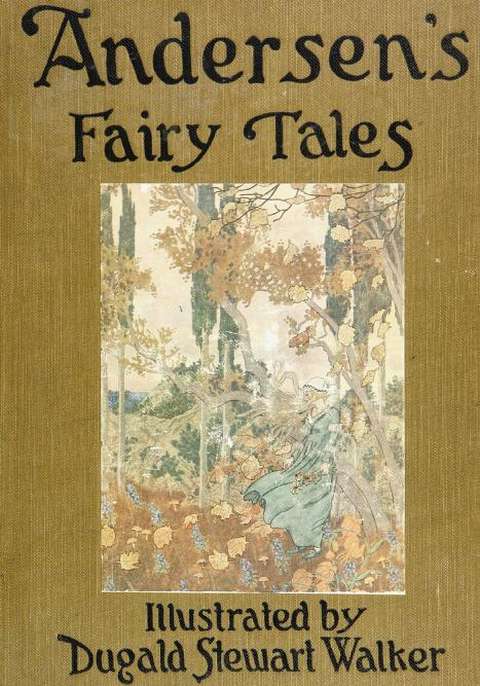
Dugald Walker described himself as a man who never grew up. He never traveled and his audience can't expect him to draw an exact scene from the North Pole or China. But if they are willing to look at giants, magicians, and other mythical creatures through kid's eyes, as the young mind believes something should be, his illustrations are the right medium for that. Another important milestone in his career was a collection of fairy tales Dream Boats: And Other Stories which he wrote and illustrated.
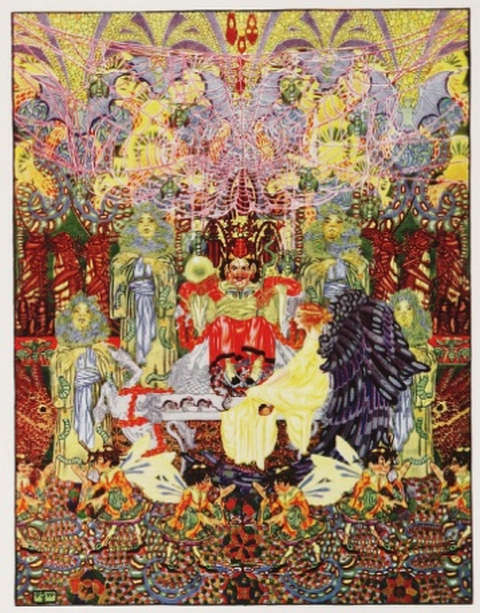
The courtiers looked most grand and proper ... Numbers of tiny little elves danced around the hall
Here is a complete set of Dugald Stewart Walker's illustrations for Andersen's Fairy Tales, published in 1914 by George Sully & Company. The text below some of the illustrations is the same as the text in the original publication.

The Mermaid

The Mermaid (more known as The Little Mermaid) is a tragic story about a little mermaid who fell in love with a prince. She saved his life but he never finds that out because she hid when he regained consciousness. They came to different worlds after all. But she tried to enter his world, sacrificing everything, going through extreme physical and psychical pain, just to be disappointed and betrayed. Her sisters tried to save her but she decided to stay faithful to her mission - being a part of the world with eternal souls.

She held his head above the water and let the waves drive them whitersoever they would
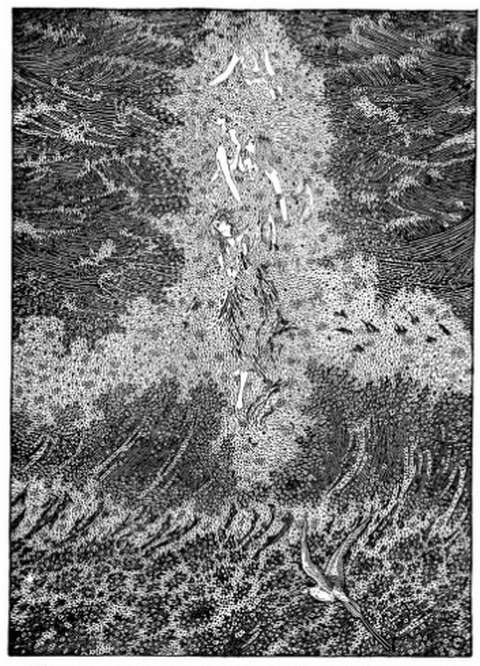
Then she saw her sisters rise from the water, they were as pale as she was
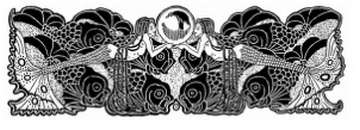
The Flying Trunk
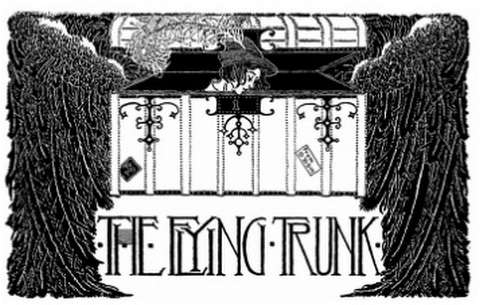
This is a bit funnier story although still without a happy ending. A boy who lacks responsibility loses everything but becomes an owner of a flying trunk. This magical object gives him a chance to meet and charm a real princess, who believes he is an angel. He makes a great impression to her parents too but still lacks responsibility and celebrates the promise of marriage so much he set a trunk on fire. So he stays poor boy but has at least a good story.

And he told her all about the storks, which bring beautiful children up out of the river
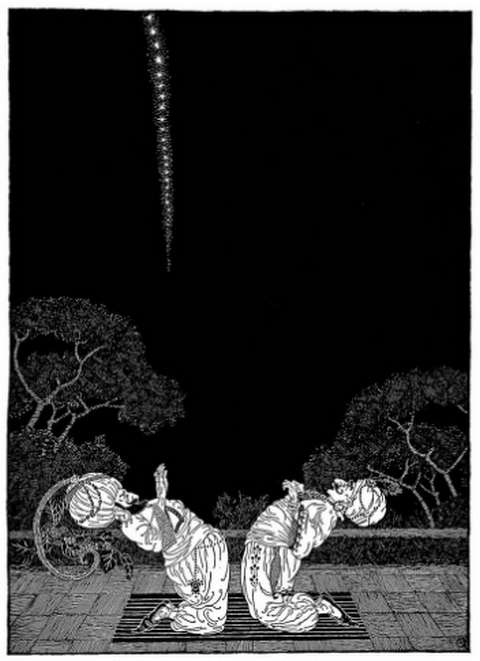
I saw the prophet myself ... his eyes were like shining stars, and his beard like foaming water

The Red Shoes
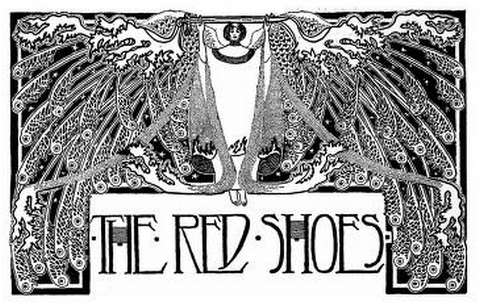
It is a fairy tale about a girl who loved to dance so much she thought only about dancing and enjoying. She got red shoes with magical powers and despite all warnings wears them everywhere. Even on Sunday in church. But the shoes start dominating her, she became unable to stop dancing, she can't take them off and must cut off her legs to stop dancing before dies of exhaustion. She lost legs and newly regained faith is her only compensation.
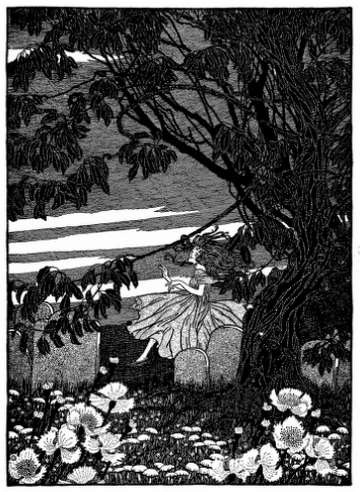
She wanted to sit down on a pauper's grave where the bitter wormwood grew
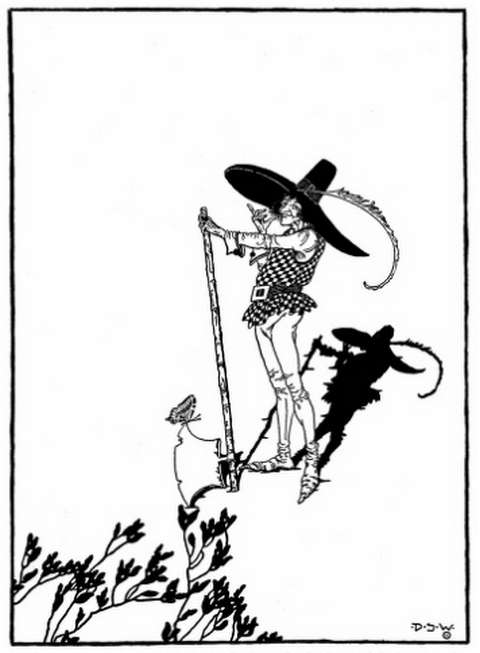
You can't know who I am? I chop the bad people's heads off, and I see that my axe is quivering
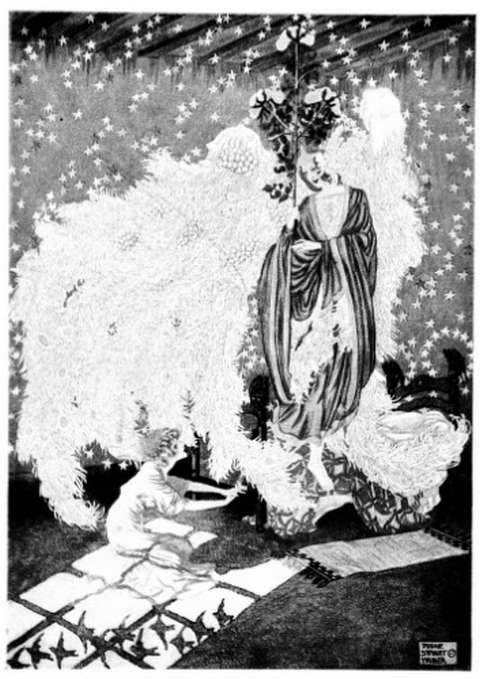
Her soul flew with the sunshine to heaven and no one there asked about the red shoes
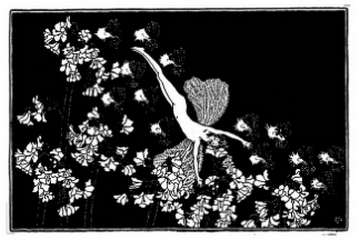
Thumbelisa

Thumbelisa is one of the less used names for Thumbelina, one of the most successful fairy tales by H. C Andersen. Thumbelina is a small girl, not bigger than a thumb, who is thrown in the big world of action, power, and dangers, always being pushed around by others, stronger characters. Despite everything, she becomes a friend with a swallow who carries her in a new world, where she meets a flower prince and finds her place among flower people.

She was so happy now, because the toad could not reach her and she was sailing through such lovely scenes
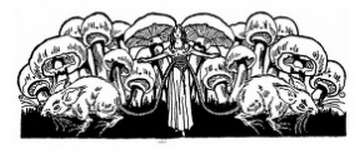
The Girl Who Trod On a Loaf
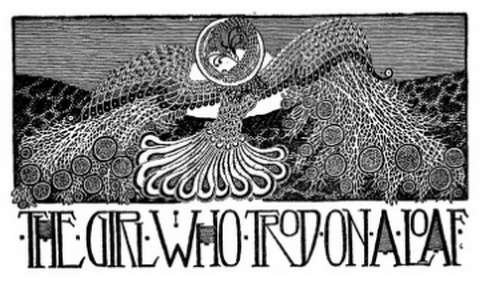
The Girl Who Trod On a Loaf is almost forgotten fairy tale about a girl called Inger. She was pretty but vain, ashamed of her own mother, and ungrateful for everything good she got from people around. On one occasion she had to go across mud but didn't want to dirty her pretty shoes, so she stepped on a loaf of bread she was carrying to her old parents. The loaf with her sank down to the marsh and she soon ends in Hell. After many years she is pitied by an unknown girl and in the end, she is finally forgiven her pride and arrogance.
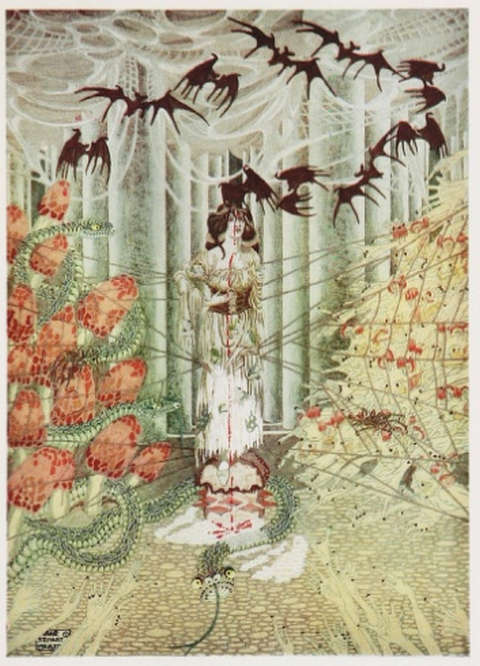
Tears of sorrow shed by a mother for her child will always reach it; but they do not bring healing, they burn and make the torment fifty times worse
The Nightingale

The Nightingale is a lovely fairy tale about friendship among a king and a bird. While this friendship becomes jeopardized thanks to the gift from the Emperor of Chine - a mechanical bird, the nightingale never forgot his king and returns to help him when Death already sits at his bed. Everybody else turned away, the mechanical bird is already broken, but the sincere love from the nightingale wins and his friendship with a king is there to stay.
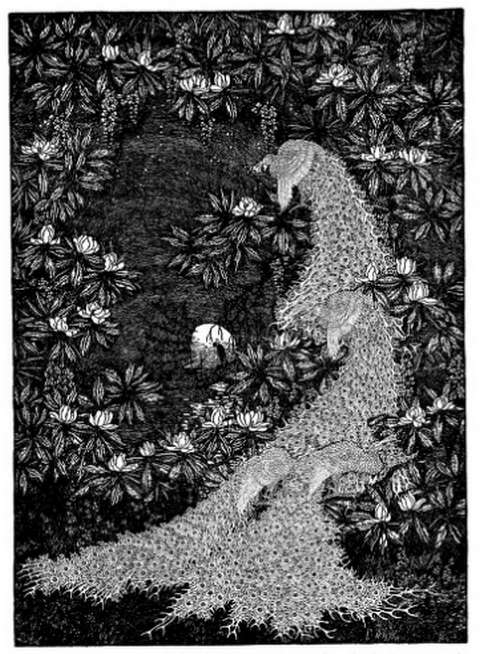
Heavens, how beautiful it is! he said, but then he had to attend to his business and forgot it.
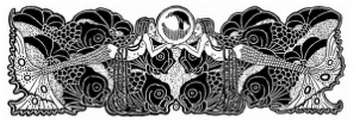
The Garden of Paradise
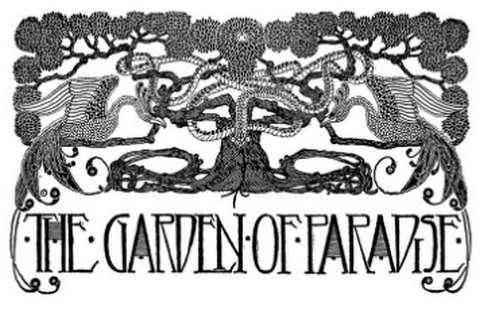
This fairy tale is about the prince who is smart, well-read, and generally happy but still seeks for very special knowledge. He wants to know where is Garden of Paradise and how it's in it. His journey is similar to many journeys from folktales - he is lost in the wood and finds a mother of all four winds. The last one of them really takes him to the Garden of Eden where he must resist temptation. Of course, he doesn't ...
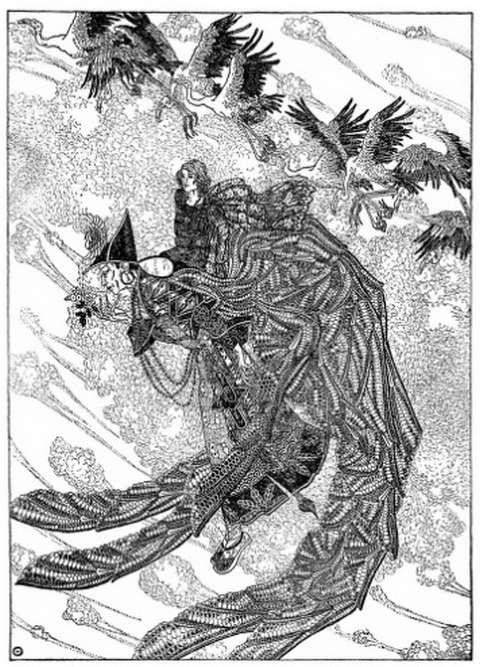
The eagle in the great forest flew swiftly, but the Eastwind flew more swiftly still
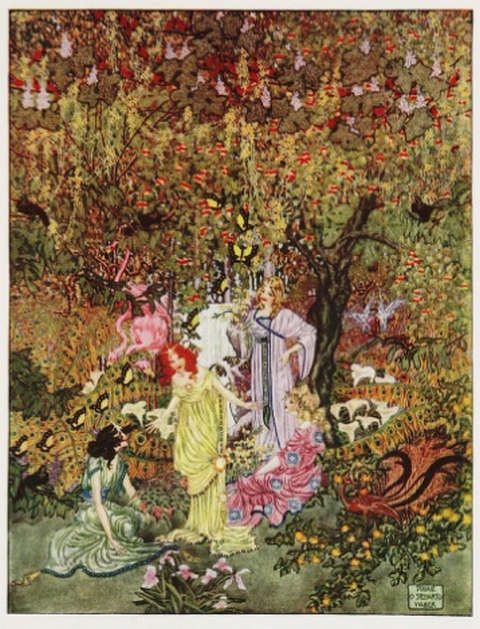
The Fairy of the Garden now advanced to meet them: her garments shone like the sun, and her face breamed like that of a happy mother
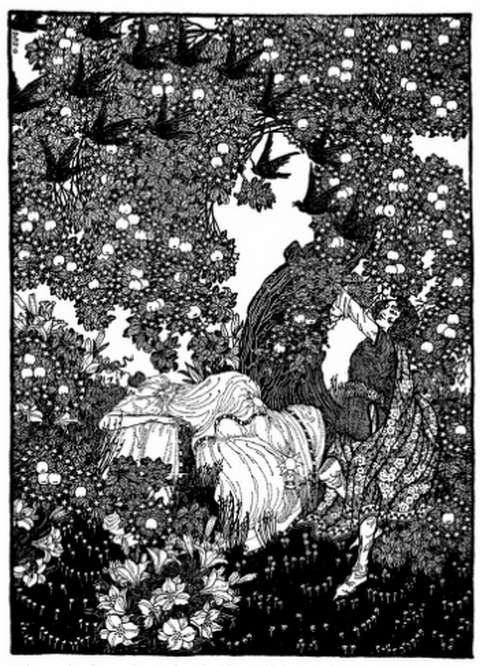
There she lay asleep already, beautiful as only the Fairy in the Garden of Paradise can be
The Wind's Tale
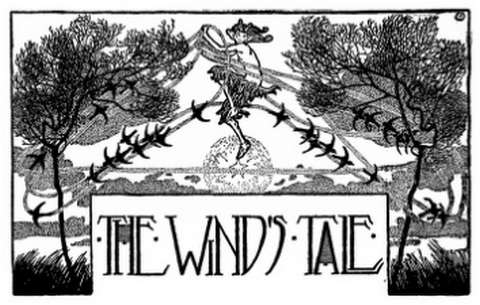
Sometimes subtitled as About Waldemaar Daa and his Daughters it's a pessimistic tale about a nobleman and his three daughters told by the wind. The nobleman was an alchemist who was constantly seeking more money and prestige. A rich and beautiful wife was not enough. Lovely daughters didn't make him happy. He wanted to know how gold is made and he sacrificed whole family fortune for a chance to find the procedure. Everything was lost, including the health of all family members. His greed didn't pay at all.
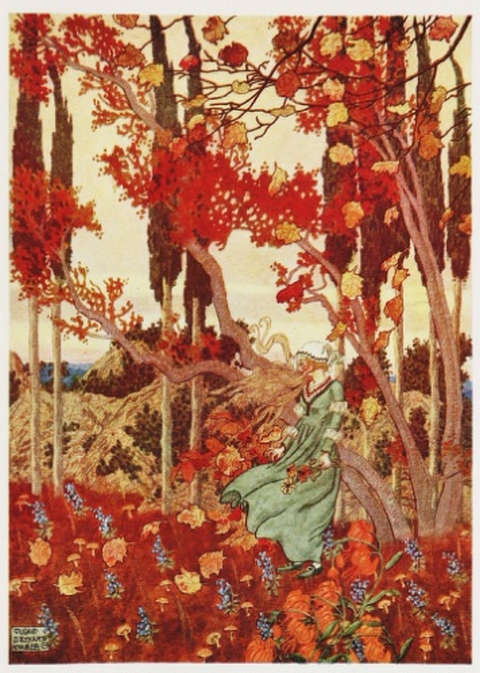
She was always picking flowers and herbs, those she knew her father could use for healing drins and potions
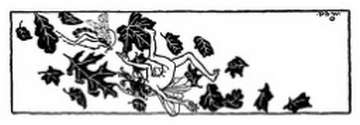
The Snow Queen
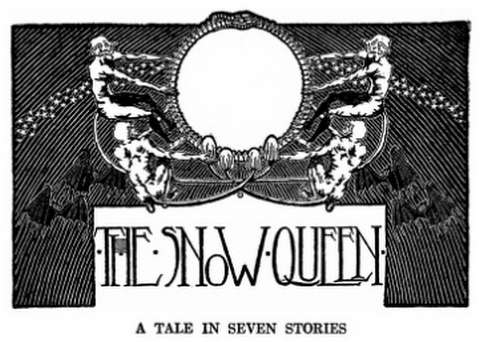
This is probably the best Andersen's fairy tale. While it starts with a wicked troll (a devil in disguise) and his magic mirror, which breaks, what leads to the kidnapping of a little boy by the Snow Queen, it's essentially a story of the fight between good and evil. This fight is presented through the journey of Gerda (kidnapped boy's best friend) who despite all the obstacles defeats the mighty queen and her magic.
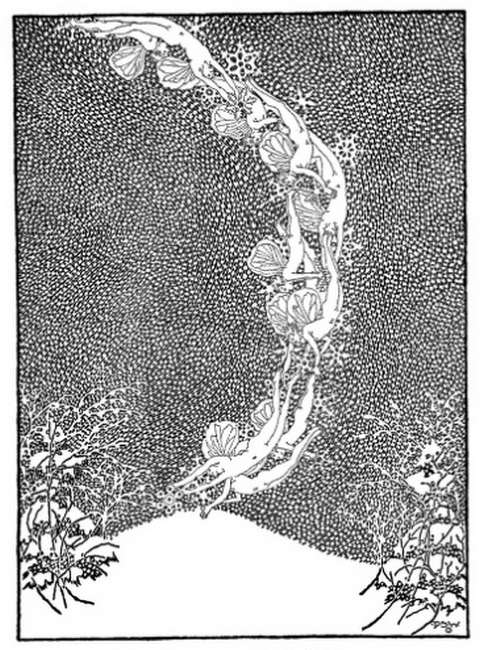
Look! The white bees are swarming
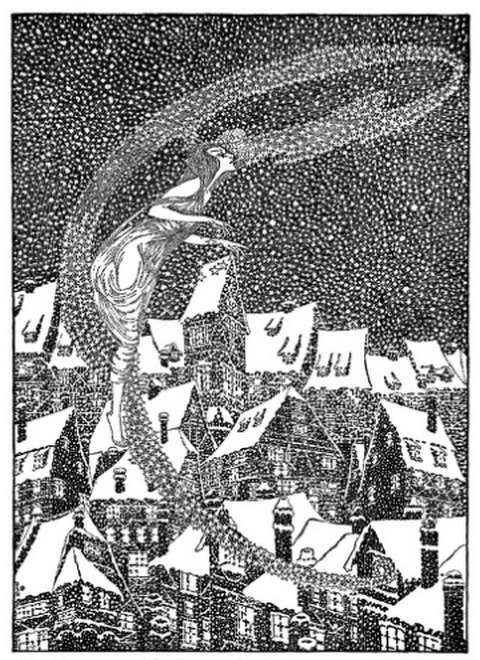
The biggest snowflake became the figure of a woman. She was delicately lovely, but all ice, glittering, dazzling ice
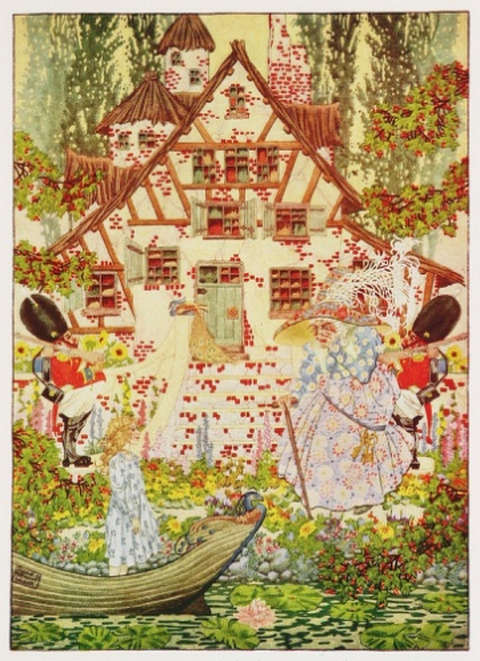
An old, old woman came out of the house ... she wore a big sun hat which was covered with beautiful painted flowers
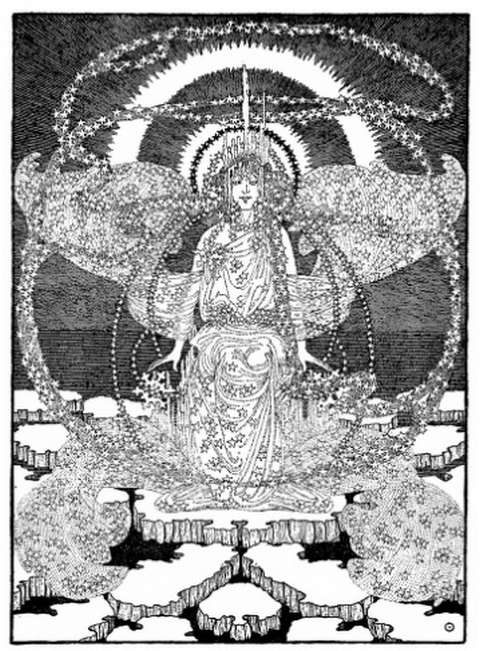
She than said that she was sitting on The Mirror of Reason, and that it was the best and only one in the world

What the Moon Saw

Originally published as The Picture Book without Pictures is a very unusual fairy tale, made of 33 unrelated scenes, impressions from the different locations with only one common feature - being observed by the moon. The scenes are different, mostly, yet not always dark and pessimistic. Considering the fact everything happens in the night the tone of the telling is understandable.
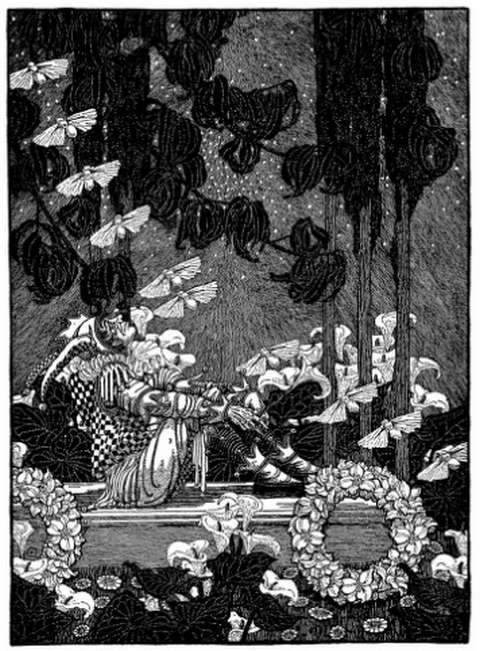
If the public had seen their favorite how they would have shouted Bravo! Bravissimo! Punchinello
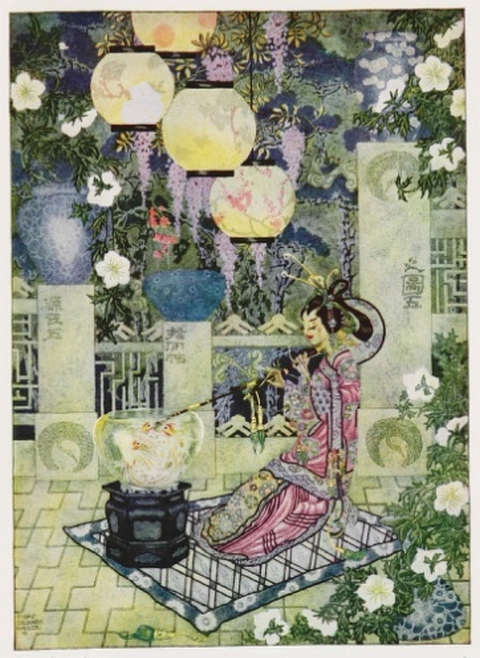
Her thaughts wandered from her home and sought Temple, but not for the sake of God! Poor Pe! Poor Soui-houng!

The Marsh King's Daughter
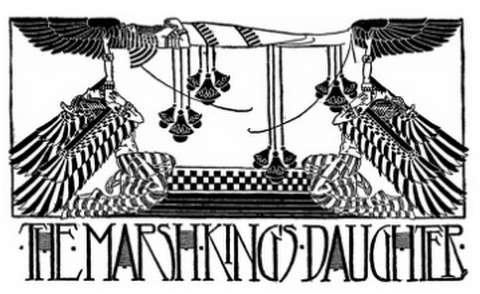
This is the second longest fairy tale by H. C. Andersen. It tells a story about an evil Marsh King who kidnapped a fairy princess from Egypt. They had a daughter who came from the depths of the marsh as a flower and is adopted by Vikings. She becomes a beautiful yet bad-tempered girl by day and good-hearted giant toad by night. As a toad gets a chance to rescue a priest from the captivity. He tries to save her from the spell but is soon killed by robbers. Despite that, he helps her in the form of a ghost and she is finally saved by the sign of a cross. She finds her mother and together they return to Egypt. There she marries a prince but is visited by the priest who takes her to heaven for three minutes only. Unfortunately, three minutes in heaven means a hundred years on Earth what means everybody she knew already died. Then she died as well.
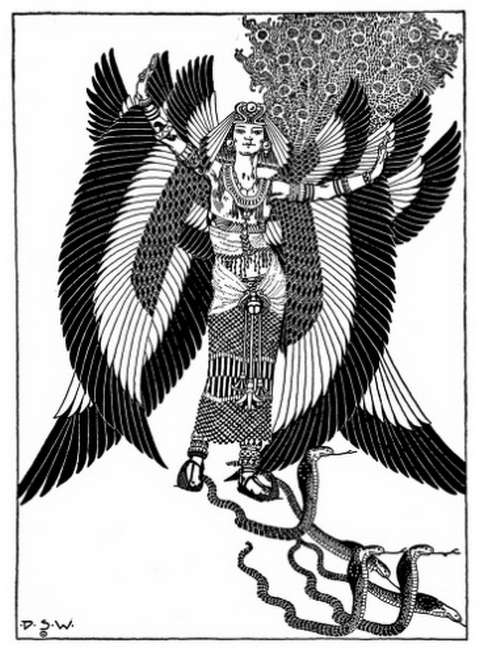
She who is related to the fairies!
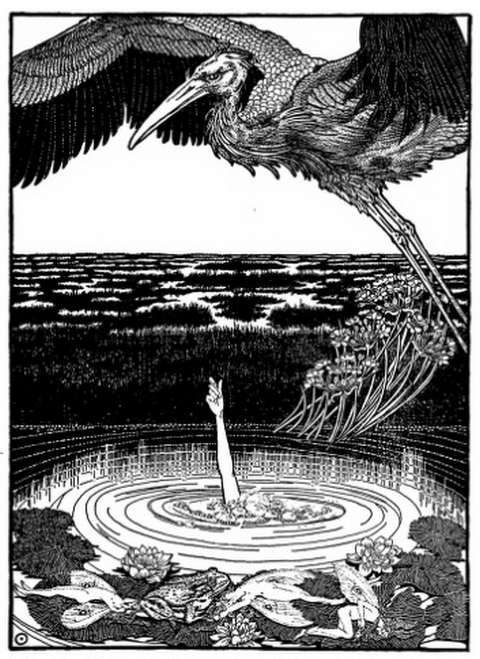
You shouldn't even tell me anything of the sort just now, it might have a bad effect upon the eggs
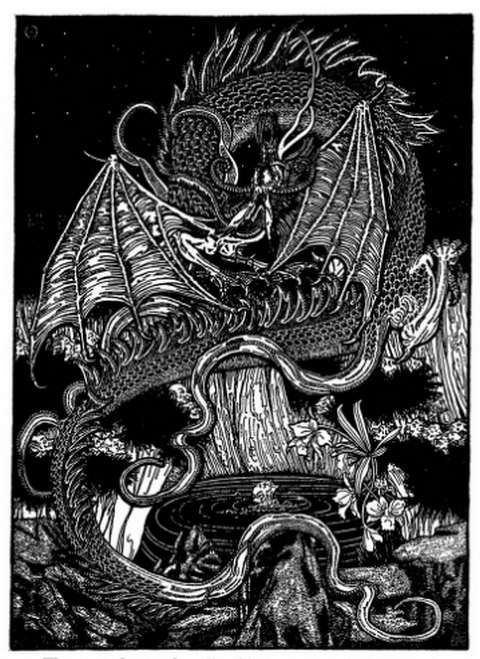
The great dragon, hoarding his tresures, raised his head to look at them
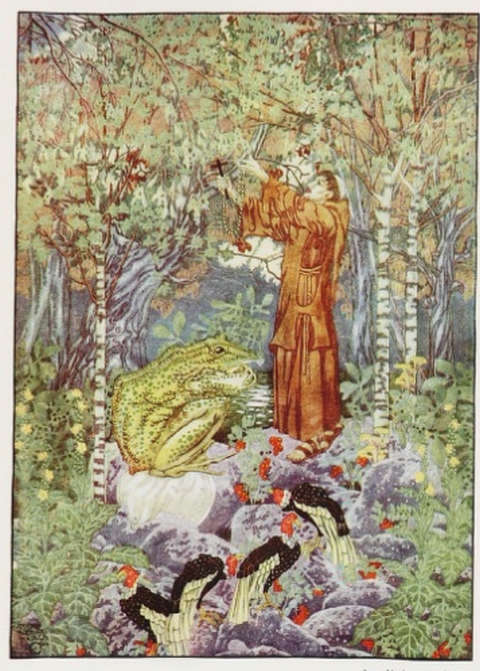
The Day-spring from on high hath visited us. To give light to them that sit in darkness, and to guide their feet into the way of peace
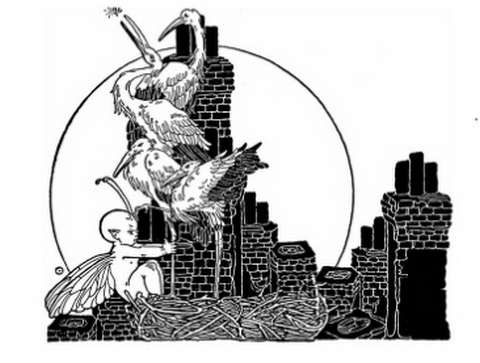
The Travelling Companions
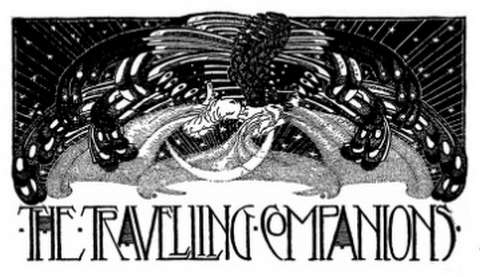
Sometimes translated as The Travelling Companion the story presents a good man who is doing as many good deeds as possible in hope at least some of other people will follow his example. Among other things, he pays a debt of a dead man. Not long after a mysterious stranger asks him if they can travel together and the main character accepts. together they got into a land where a wicked princess asks her guests three questions. If they fell, they must die. Together they discover she is not wicked but under a spell, save her from the spell, the main character marries her and his traveling companion reveals him as the man whose debt he paid.
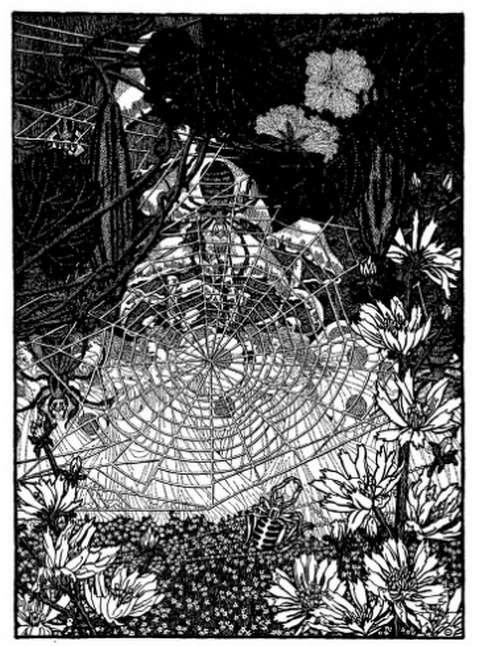
Great spiders spun their webs from branch to branch and the fairies swung hand in hand upon the big dewdrops which covered the leaves and the long grass
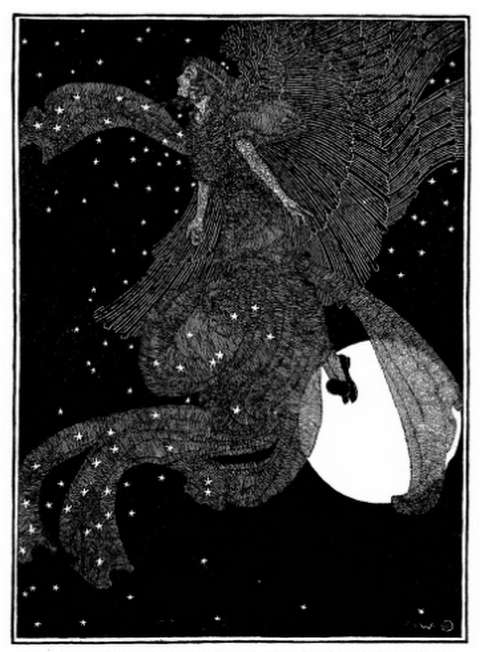
Oh what a flight that was through the air; the wind caught her cloak, and the moon shone through it
This concludes our journey in somehow dark yet beautiful fairy land of Hans Christian Andersen illustrated by Dugald Stewart Walker.